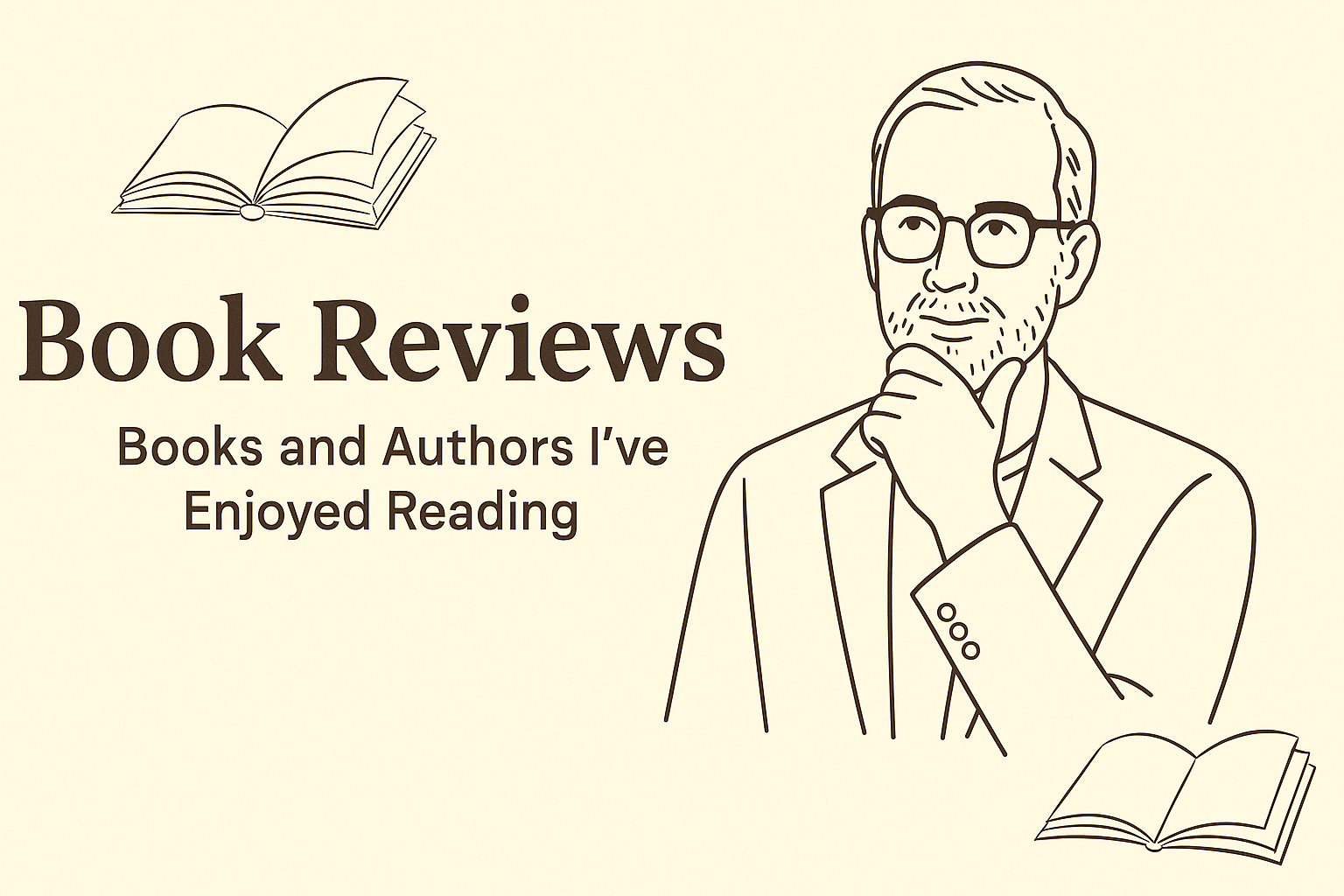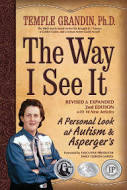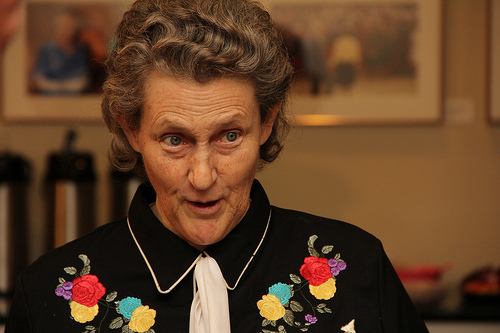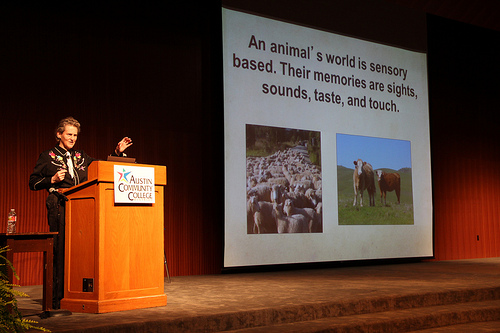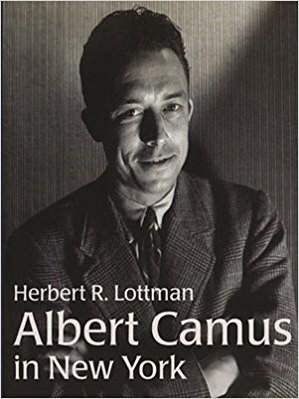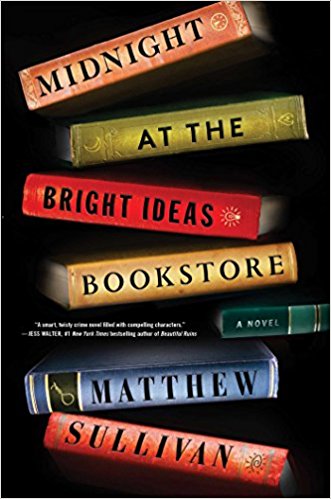The Way I See It by Temple Grandin, PH.D.
The book, “The Way I See It” by Temple Grandin PH.D., is especially interesting, since the author has had her place on “the spectrum”, having autism since birth. Autism is a developmental disorder with different degrees of strengths and challenges. Individuals who are very close to the same place on the spectrum may react with very different levels of severity. Every person with autism is unique and that is why it is referred to as a spectrum disorder. The issues can range from problems of being nonverbal and challenges, that can include self-injurious behaviors and mental challenges, to the higher functioning level known as Asperger’s Syndrome. At the higher level of the spectrum people are often extremely intelligent and have expressive language skills.
Grandin says that she does not think in words but instead retrieves images from memory. She says she lacks social intuition and relies on logic to guide her behavior. She is a professor of animal behavior and well-known designer of livestock equipment. She credits her autism to her success in understanding animals.
The original title for this book was A Cow's Eye View and it was her observation of cattle's reactions in squeeze chutes that led her to design a squeeze machine that she uses daily to calm her anxieties. Her work with animals is fascinating and the book profiles much of her work.
A summary of the topics that the book looks at: 1.How and Why People with Autism Think Differently. 2. Economical Early Intervention Programs that Work. 3. How Sensitivities Affect Learning. 4. Behaviors Caused by a Disability vs Just Bad Behavior. 5. Teaching People with Autism to Live in an Unpredictable World. 6. Employment Ideas for Adults with Autism.
The book is not just interesting, it is helpful. If you read it you will likely find yourself looking for others books that Temple Grandin has written as I did.
The Gunslinger, The Dark Tower, by Stephen King
The Gunslinger is a novel by American author Stephen King that he began in collage in 1970. It was the first volume in what became the Dark Tower series. It was first published in 1982, bringing together five short stories that had been published between 1978 and 1981. The version in print today was revised again in 2003.
The Dark Tower is a series of eight books using multiple genres, including dark fantasy, science fantasy, horror, and Western. This first book should be important to understanding this body of work by Stephen King. His writing style and use of many different genres makes for an interesting Western, but it is a little confusing trying to understand why the Dark Tower is such an obsession in this first book.
The gunslinger’s obsession with the tower is more than just a physical one but is revealed with a great deal of metaphorical references. One of these that is memorable is "Go then, there are other worlds than these".
Roland Deschain, the last gunslinger, has been chasing "the man in black", for many years. Roland sometimes speaks in what is called “high-speech”. Perhaps this is due to his implied aristocratic state and the man in black implied state as a sorcerer and pure evil.
The book is a very unique and interesting Western. It was a slow read and harder to follow than what I expected from Stephen King.
Quotes from the Book
“where the world ends is where you must begin”
“The mystery of the universe is not time but size.”
“the man in black travels with your soul in his pocket.”
“Beyond the reach of human rage
A drop of hell, a touch of strange ...”
How to Think like Leonardo da Vinci, by Michael J. Gelb
Genius is made not born, and human beings are gifted with an almost unlimited potential for learning and creativity, according to Leonardo da Vinci.
Leonardo da Vinci, was the model for this book but it would be unfair to assume that everything in it is his wisdom and creative approach.
Michael Gelb added his own message, designed to compliment da Vinci ideas. He planned to use the ideas in the book for his own seminars and workshops. The book presents these as "the Seven Da Vincian Principles" for learning how to approach life like a genius.
The books goal is to enable us to uncover our own hidden abilities, sharpen our senses, and liberate our own unique intelligence by following and understanding the example of Leonardo da Vinci.
I think that goal was achieved with some of the chapters, but not all. For those fascinated with da Vinci the book will be a good experience. Some of the exercises and approaches in the book were unique. They alone make the book worth reading.
Albert Camus in New York, by Herbert R. Lottman
Albert Camus was a French-Algerian journalist, playwright, novelist, philosophical essayist, and Nobel laureate. He was born November 1913 and died in January 1960.
His first influential novel, The Stranger, was released at the same time that the Cultural Relations Section of the French Ministry of Foreign Affairs sent him on a trip to represent the French Government in the United States.
Camus' arrival in the United States had been anticipated by a full-page article in the New York Herald Tribune Weekly-Book Review. His book "The Stranger" was already in print in France under the name L'Etranger.
The book, "Albert Camus in New York" is like a chapter from Herbert Lottman's 848 page biography of Camus.
In the lectures he gave on his trip he was often asked about his philosophical point of view, which he labeled as "Absurd-ism". Sartre, an existentialist, had reviewed The Stranger and he was often confused with Camus by Americans.
Wherever Camus went he was asked if he was an existentialist. He didn't seem to like being asked and he always said no.
The meaning of existentialism suggests that each individual—not society or religion—is solely responsible for giving meaning to life. Moral values are abstractly contrived and do not exist otherwise.
Camus's Absurdism" refers to the conflict between the human tendency to seek inherent value and meaning in life and the human inability to find any. In this context absurdism does not mean "logically impossible", but rather "humanly impossible".
This small books gives some insight into where Camus was coming from overall.
The Stranger by Albert Camus is reviewed on this site. See November 5th 2017 post below
Albert Camus was a French intellectual and influential philosopher who was awarded the Nobel Prize for Literature in 1957.
The Silent Wife by Kerry Fisher
Kerry Fisher (above on the right) wrote a letter to this books reader, and it is located at the end of this novel. It tells us why she decided to write this story. She said, in searching opinion pieces and internet forums discussing what women were talking about, that the discussions came back, over and over, to the intricacies of family dynamics.
The story centers on two brothers who live next door to each other, across the street from their mother, Anna. Anna is the matriarch of the Farinelli extended Italian family. Lara is married to Massimo Farinelli and they have a son Sandro. Massimo is the older brother and has been married before. Their life looks perfect on the surface. Maggie is married to Massimo’s brother Nico. Maggie is the stepmother to their daughter, Francesea.
The book was originally titled “The Secrets of the Second Wives”. There is plenty of material here to discuss family dynamics, and indeed that is what the book does.
In Kerry’s letter she mentioned that she knew conflict was the “heart of a good novel”. The subject of “The Silent Wife” was indeed one of conflict.
The book has received good reviews and I thought it was well written. I found my own interest drifted as the story seemed to move slow. I wish I had read the letter from the author at the end first.
About the Author Kerry Fisher
Kerry Fisher was born in Peterborough, UK. She studied French and Italian at Bath University, and then worked for several years as an English teacher in Corsica and in Spain. Her Website is:
www.kerryfisherauthor.com
A Man Called Ove A Novel, by Fredrik Backman
Pictures of Fredrik Backman & Ove's Auto preferance the Saab
Ove’s story is heartbreaking, and it is very funny. It is filled with diverse characters, including the cat. Ove is Swedish and the story takes place in Sweden. It is a book you will not want to put down and one that will make you laugh out loud.
Both growing up as a child, and then later as an adult, Ove is described as a curmudgeon. He has strict principles, fixed routines and the image of a crusty old man who is ill-tempered, but this image is only true at first glance.
With a closer look you find that he has a heart of gold. Much of what is good in Ove was brought out by his wife, Sonji, who comes into his life and balances his pessimism with her optimism and warmth. She is really the opposite of Ove in most every way, but she is as dedicated to Ove as he is to her.
Driving a Saab is a litmus test for Ove and if you do drive one your more than ok. If you drive a Volvo, BMW or foreign car, it can be a reason for not speaking.
Ove’s wife dies, and it is heartbreaking. It takes a lot of time but it is a woman who again turns him around, for a second time. Parvaneh moves, with her husband and children, next door. His relationship with their children is very touching.
The book is an exploration of how one life impacts so many others and is well worth reading.
About the Author
Fredrik Backman grew up in Sweden. He has been writing for Helsingborgs Dagblad and Moore Magazine in Sweden. His first book was "A Man Called Ove" and was published in 2012. It was adapted into a film which came out in December 2015.
Midnight At The Bright Ideas Bookstore by Matthew Sullivan
Lydia Smith really loves her job at the Bright Ideas Bookstore in Denver. She grew up in a library-based- home in this town about 20 years ago.
She had only two friends. Raj was a boy her age and Carol was her other friend. At a sleep over at Carol’s house, Carol and her parents were brutally murdered by the Hammerman. Lydia hid but it seemed like she was spared? The mystery of who the Hammerman was is still not solved, but things that happen at the bookstore and in Lydia’s life take her back to that mystery.
The bookstore is a second home to many of the area street people and Lydia feels a connection to them. She sees them as dreamers and refers to them as BookFrogs. One of the dreamers, Joey Molina, is a real mystery but it eventually becomes clear that he is part of a bigger picture that includes the mystery of her youth. Joey is in his early twenties. He loves books and he considers Lydia his only friend.
She is disconnected from her father and their relationship is an interesting part of the plot. Her childhood friend Raj comes back into her life and they try hard to understand the events they both shared growing up and what is happening now. They both become obsessed with who Joey really is.
It is a dark story with a twisted plot. The reviews I found on this book offer a lot of details that seem to be spoilers. The twisted plot is a delightful part of this book, so I have been hesitant to mention more of the events here. The book will pull you in and you will not want to put it down
About Matthew Sullivan
Matthew Sullivan grew up in a family of eight children in suburban Denver, Colorado. He received his B.A. from the University of San Francisco, his M.F.A. from the University of Idaho, and has been a resident writer at Yaddo, Centrum, and the Vermont Studio Center. His writing has been nominated for the Pushcart Prize and other awards, and has won the Florida Review Editor's Prize and the Robert Olen Butler Fiction Prize. In addition to working for years at Tattered Cover Book Store in Denver and at Brookline Booksmith in Boston, he has taught writing and literature at colleges in Boston, Idaho, and Poland, and currently teaches writing, literature, and film at Big Bend Community College in the high desert of Washington State. He is married to a librarian, Libby, and has two children and a scruffy dog named Ernie.
Sweet Promised Land, by Robert Laxalt
The question of whether you can “go home again” takes on special meaning in the book “Sweet Promised Land”, especially for all first-generation immigrants who leave their homeland to come to America. It is one man’s experience presented as a memoir, rather than as a fictional story, more the norm for mid twentieth century writers.
Dominique left his Basque home as a very young man. It was 47 years before his return in the 1950’s. Many will recognize that time and it will be a contrast they will feel and share. Others, who were not born until much later, will have less experience and will have to rely on the authors presentation of the contrasts. Either way it is a story of discovery.
Dominique, recalls the days of rich open ranges and dirt streets in the old country He then comes as a young sheepherder to America and the work is similar, but the land is less accommodating. America is the difference and it is indeed a land of opportunity that Dominique and his family benefit from.
Dominique’s wife was also a Basque who immigrated. They met in Reno. After they married she worked the sheep camps with him for a while and then she settled in Carson City running a small hotel where her focus was to get the children educated.
Late in his interesting life Dominique had a little stroke. He hadn’t been able to stop working before. When he tried, and then saw past friends who had quit working and not too soon later died, it upset him, so he went back to work in the mountains.
Dominique could now afford to quit. He could afford to go back to the old country and he wanted to. It took his family who loved him very much to convince him to go. The family probably didn’t realize that Dominique saw people at a much deeper level than they assumed. His youngest son was especially concerned that the trip be successful, and he went with him. They fly to New York City, Paris and then the Pyrenees where the homecoming is joyful.
A special time is spent with his sisters and extended family. He was a returning hero and the homecoming was an emotional time filled with great happiness. He did not know how he would feel when it was time to go, but he learned that it was no longer where he belonged. His son learned not just about the old country, but a lot about how his father’s wisdom.
The immigrant experiences provide a “source of ethnic pride”. The book is a classic celebration of Americana and something we all should read.
Quote
"Then I saw a cragged face that that land had filled with hope and torn with pain, had changed from young to old, and in the end had claimed. And then, I did know it.”
Author Robert Laxalt
the Stranger a novel by Albert Camus
I first read this book 50 years ago. The book, published in 1942, was Camus’s first novel. Jean-Paul Sartre’s initial review of the book helped it, but it was not an immediate success.
I have gone back and reread this book several times over the years and always I find that the mood of the book seems stark. The book suggests the human inability to find any meaning in life.
In collage we were asked to read this book while we studied Sartre. Camus was labeled as an “absurdist” which suggested that human beings exist in a purposeless, chaotic universe. Sartre was considered an existentialist which emphasizes the existence of the individual as a free and responsible agent, determining their own development through acts of the will.
When we studied Camus we were asked whether he wasn’t really an existentialist? Camus never did agree that he was an existentialist and didn’t like being labeled that way. He presented the book, “the Stranger”, to show an individual who was free from outside influence, emotionless, who didn’t play the game, and whose existence seemed to be purposeless.
Meursault lived in a rooming house in Algiers. His mother died, and he was called away for the funeral. At the funeral he showed no emotion and the next day when returning home, he and his girlfriend Marie went to a comedy movie. He had a neighbor, Raymond. They went out walking and Raymond’s enemies, who were Arabs, came after him to hurt him. Meursault tried to protect Raymond and when it looked like it would happen again he gets Raymond to give him a gun that he had and planned to carry. That threatening incident passes but later when Meursault is out walking alone one of the Arabs confronts him. He still has the gun in his pocket and in self-defense he shoots and kills the Arab.
After months of imprisonment the trial leads to the death sentence. The sentence is obvious to not be for the crime, but for his detachment and indifference to his mother's death.
In January 1955, Camus wrote: “I summarized The Stranger a long time ago, with a remark I admit was highly paradoxical: 'In our society any man who does not weep at his mother's funeral runs the risk of being sentenced to death. I only meant that the hero of my book is condemned because he does not play the game.”
The well-crafted story, in my opinion, does not leave you convinced that the world is without meaning. There is much of interest in the characters whose lives were important to them. It is worth going back and reading again or just reading it if you have not done so.
The Rooster Bar, by John Grisham
John Grisham’s book, The Rooster Bar, is a surprise. It does have an interesting story and the plot is believable, but the characters seem to lack the depth that you expect from his stories.
He said in an author’s note at the end of the book that he got the idea for the book when he read an article in the Atlantic called “The Law-School Scam,” which was an investigation of for-profit law schools. I would have liked to have read this before I started.
The main characters, Mark, Todd, and Zola just came together in this complicated plot, and even though the death of a friend and the pressure of the debts were good reasons, it still seemed sort of weak that they would wind up in this together as deep as they did.
Grisham can make you like a character ,and even more important he can make you feel what they feel, but he didn't do it with these characters.
This is the only Grisham book I stopped and wondered whether to continue before finishing but by the second half the plot pulled me in and and I am glad I stayed with it.
The student debt totals 1.4 Trillion
Pat Conroy, A Lowcountry Heart & Reflections on a Writing Life
This book was put together as a final collection of interviews, articles and letters from Pat Conroy's long literary life. The book attracted me because of the sub-title "Reflections on a Writing Life".
Pat is well known for the 11 books he wrote but I have not read any of them yet. The Great Santini and Prince of Tides are perhaps two of the better known books of his and were made into movies. The movies didn't make me want to find out more about Pat as finding out more his life has. I do love this quote of his: "the most powerful words in the English language are, Tell me a story."
There is much about this author that interests me, the least of which is that we are the same age and he passed away in March of 2016.
The cover page of his web site, www.patconroy.com , states that he "uses stories to explore the great themes of life". The book reveals much of his conversations over the years and it also shows how very many different authors he as read. As with so many great writers you find out they are amazing in how much they read.
He liked to portray himself as a Southern gentleman but he said of his reading that, "If I can't understand it then who the hell can? He loved to gather stories and to talk with his readers. He told them openly that he was collecting stories. He referred to himself as one of the ones in life who was a "designated rememberer".
He was known for the way he would do book events for new books at stores across the country He would talk to each person and even listen to their stories and would go late into the night to finish all that came.
The Pat Conroy Literary Center has a web site and one of the first things you see on it is that one of it's purposes is to "honors his fierce love for the diverse voices that tell our crucial stories, the teachers who call those stories forth, and the readers who keep the stories alive." A quote on the site I really liked was:
"I was born to be in a library"
www.patconroyliterarycenter.org
The book helped me get to know him better. I wanted to learn what made him tick and the book was useful.
Neil Gaiman, the View from the Cheap Seats
In this book, Neil Gaiman talked about fantasy and imagination. What he learned from his trip to China is very interesting regarding this subject.
Neil Gaiman is a fiction writer, especially for young readers, and he went to a worldwide meeting for fiction writers in China. He knew that over the years, China didn't even allow fairy tales and fiction in their schools, so he was surprised that this event had invited him to China for this event.
He asked an official of the event what had happened and why the interest now is in fantasy and fiction. He was told that top Chinese officials had toured all the big companies they did outsourcing work with within the United States and asked those they met "what they read.” They all said science fiction was a top choice, and fantasy and fiction went along with this. They were looking for why these plants excelled in creativity. It seemed clear from their findings that creativity was sparked by imagination. Fiction and fantasy were added to the school curriculum in Chinese schools.
The author ponders the truth of fiction and the power of the stories. The book contains speeches, articles, introductions, and essays. His first chapter sets the tone with his focus on "Why Our Future Depends on Libraries, Reading and Daydreaming.” He said in the introduction that he liked fiction because he wanted to "tell the truth without ever needing to worry about the facts."
This guy might find things will clear up for him if he starts doing some regular reading.
Some favorite Neil Gaiman Quotes
"You can no more read the same book again than you can step into the same river.”
“Fiction is the lie that tells the truth, after all.”
“Albert Einstein was asked once how we could make our children intelligent. His reply was both simple and wise. “If you want your children to be intelligent,” he said, “read them fairy tales. If you want them to be more intelligent, read them more fairy tales.”
If you already know Neil Gaiman's work this book is a real treat. If you are new to him this will be a great introduction.

